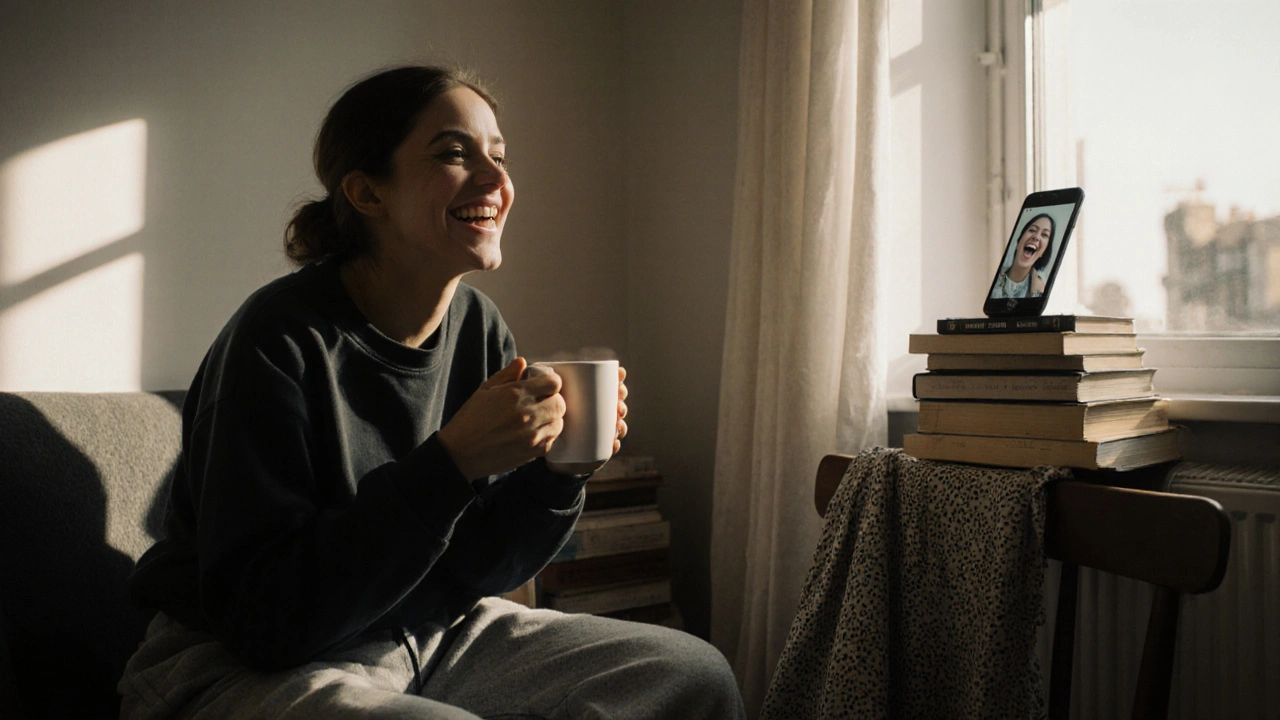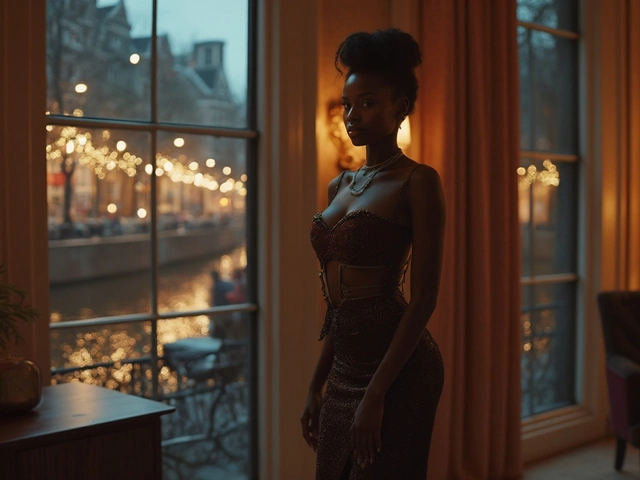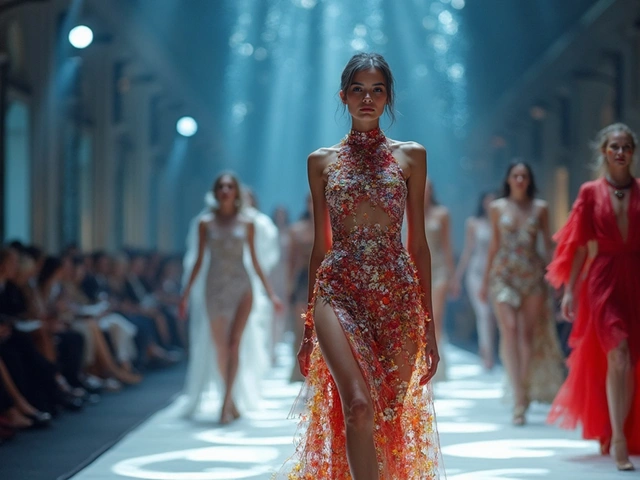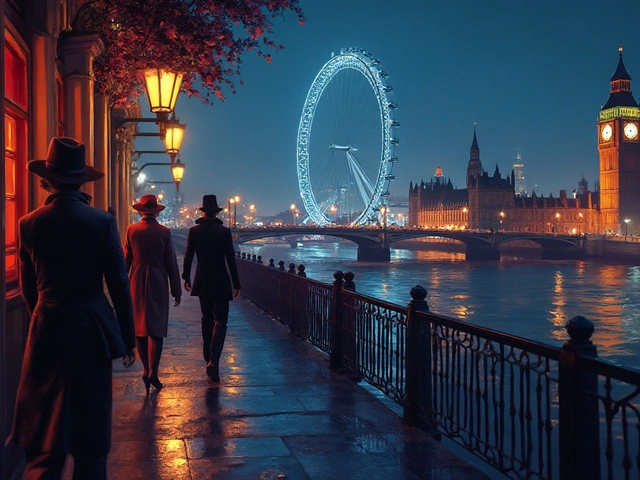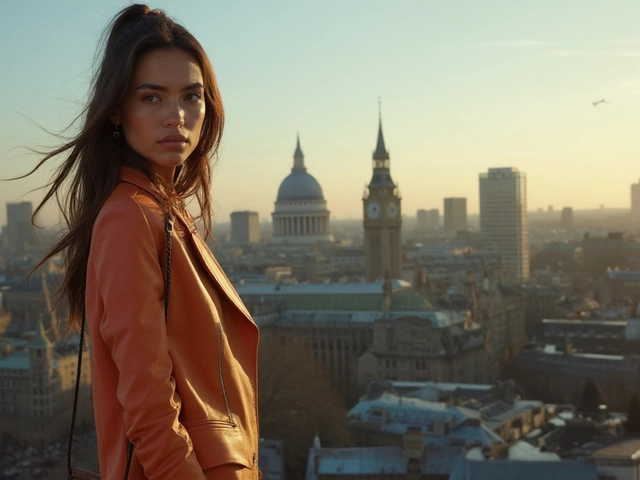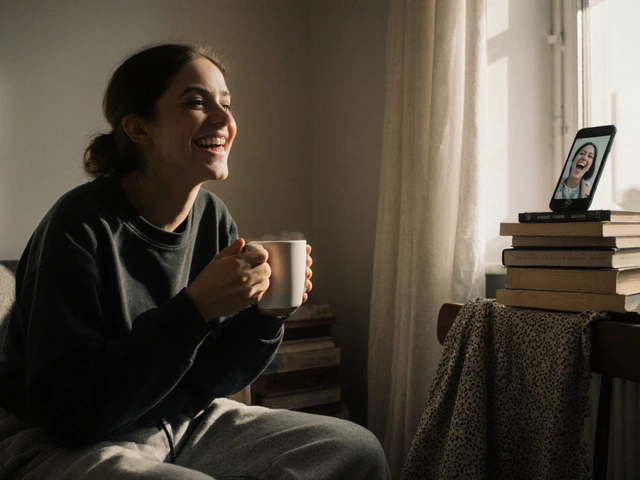Five years ago, a model’s photoshoot was planned in a studio with a team of five people. Today, it’s often a solo shoot in a bedroom, lit by a ring light, with a phone propped on a stack of books. The shift didn’t happen because cameras got better. It happened because social media rewrote the rules of what a model photo even means.
What a Model Photo Used to Be
Before Instagram, model photoshoots were about selling a dream. Magazines like Vogue and Elle paid photographers and stylists to create images that felt unattainable - perfect skin, impossible poses, clothes that didn’t exist in real life. Models were hired for their look, not their personality. The goal was to look like someone else’s fantasy, not like yourself.
Back then, a model’s portfolio had maybe 20 high-end shots. Agencies kept them on tight schedules. Shoots took days. Lighting was controlled. Backgrounds were painted or draped. The final image was chosen by an art director, not a teenager scrolling at 2 a.m.
How Social Media Changed the Game
Now, a model’s most important photo might be taken on a Tuesday afternoon in their flat, wearing sweatpants, holding a coffee cup. It doesn’t need to be perfect. It needs to feel real.
Instagram, TikTok, and Pinterest don’t reward polish. They reward consistency, personality, and relatability. Brands noticed this. They stopped hiring models just for their jawline. They started hiring them for their vibe.
Take a look at any brand’s current campaign - Glossier, Fenty Beauty, Aerie. Their models aren’t just posing. They’re laughing, adjusting their hair, showing stretch marks, or holding a phone mid-sentence. These aren’t fashion ads. They’re user-generated content that looks like it was made by someone you know.
That’s why models now spend as much time learning how to shoot themselves as they do learning how to walk a runway. Many hire lighting kits and backdrops. Others learn basic editing in Lightroom or VSCO. Some even film their own behind-the-scenes clips to post alongside the final shot.
The New Photoshoot Checklist
If you’re a model today, your shoot prep looks nothing like it did ten years ago. Here’s what actually matters now:
- Know your platform. Instagram favors vertical shots. TikTok needs movement. Pinterest wants bright, clean backgrounds. Your photo must fit the platform before it fits the brief.
- Shoot with intention. Every image should serve a purpose: to sell a product, show a lifestyle, or build trust. No more ‘just because it looks nice’.
- Use natural light. Studio lights are expensive. A window with morning sun is free and more trusted by audiences. Over 70% of top-performing model posts on Instagram use natural lighting, according to a 2024 analysis of 12,000 campaign images.
- Be yourself. Audiences can spot a fake. A forced smile in a designer dress won’t outperform a tired but genuine laugh in a thrifted sweater.
- Post the process. People don’t just want the final image. They want to see how it was made. A 15-second clip of you adjusting your outfit, fixing your hair, or laughing at a bad shot gets more engagement than the final photo.
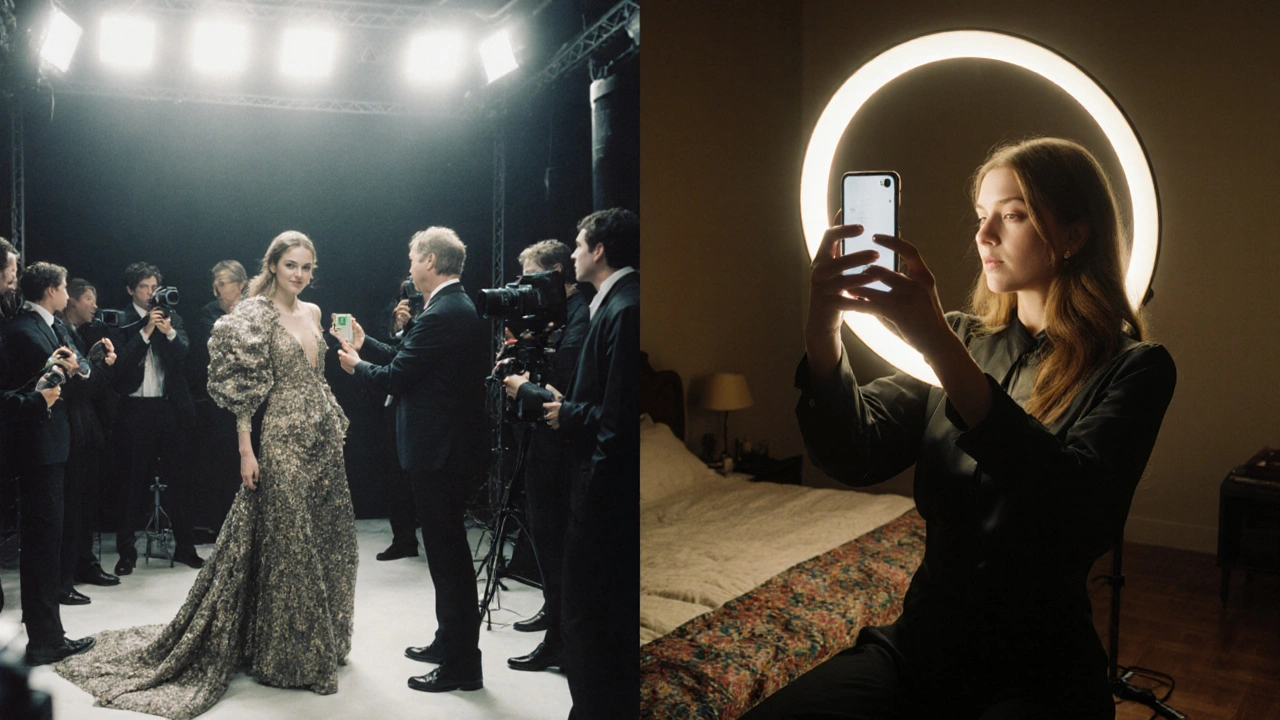
Brands Are No Longer Hiring Models - They’re Hiring Content Creators
Agencies used to say, ‘We need a 5’10” size 2 with blue eyes.’ Now they say, ‘We need someone who gets 15K likes per post and can write their own captions.’
Some brands skip agencies entirely. They find models on TikTok, DM them, and send a $50 gift card for a three-photo shoot. The model posts it with a hashtag like #SponsoredBy[Brand]. The brand gets authentic reach. The model gets exposure. No contract. No legal team. Just a DM and a thank you.
This isn’t just happening to new models. Even top models now run their own shoots. Gigi Hadid doesn’t just appear in campaigns - she posts her own behind-the-scenes clips from set. She films the makeup artist, the wardrobe changes, the snacks on set. Those posts get more likes than the official campaign photos.
What’s Lost in the Shift
It’s not all good. The old system had structure. Models got paid fairly. There were contracts. Insurance. Professional stylists. Makeup artists. Hair teams. Now, many models are expected to do everything themselves - and get paid less.
Some brands pay $200 for a model to shoot 10 photos, edit them, write captions, and post across three platforms. That’s less than $20 per image. Compare that to traditional shoots where models earned $500-$2,000 per day, just for showing up.
And the pressure? It’s constant. Models now track their own engagement. They worry about likes, comments, saves. They compare their follower growth to others. Many burn out within two years.
There’s also a loss of craft. Photography used to be an art form. Now, it’s a content machine. Composition, lighting, storytelling - these skills are still valuable, but they’re often ignored in favor of speed and volume.
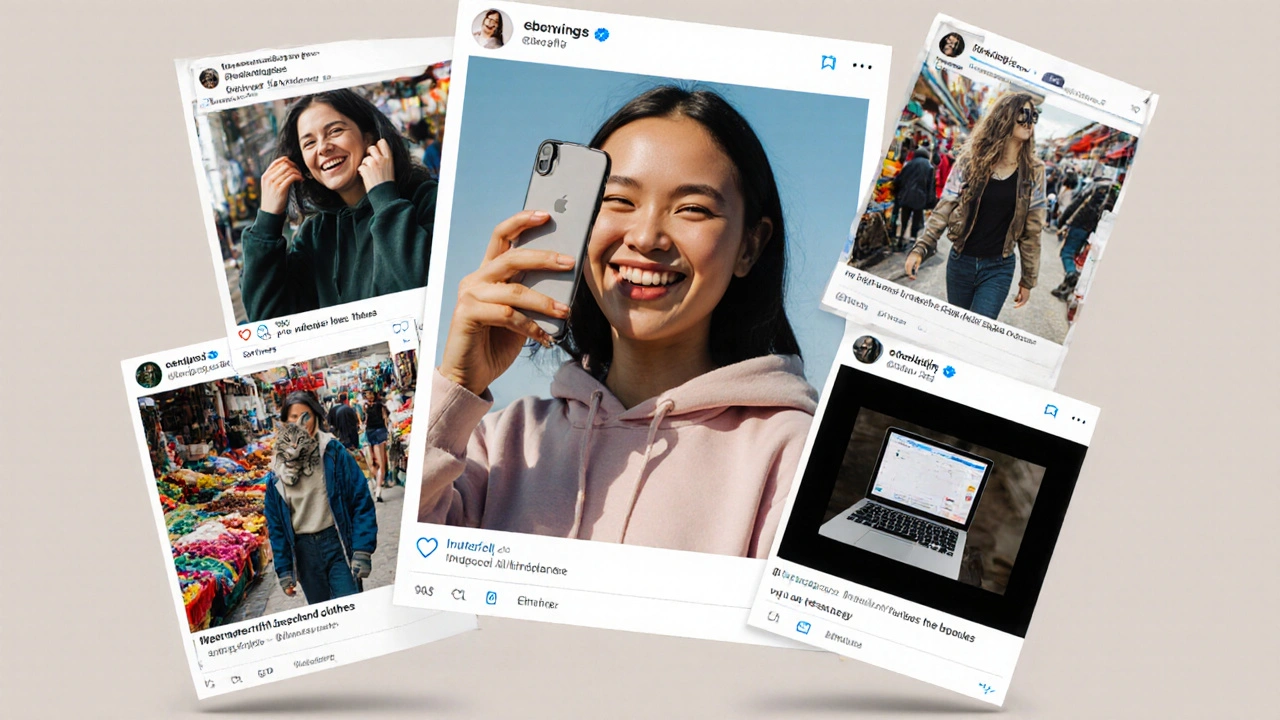
What Works Now - Real Examples
Take Mia, a 24-year-old model from Manchester. She started posting photos of herself in secondhand clothes with captions like, ‘This dress cost £8. Here’s how I styled it for a Zoom call.’ Within six months, she had 80K followers. A sustainable fashion brand reached out. They didn’t ask for a studio shoot. They asked her to film a 60-second video walking through her local market, picking out outfits, talking about thrift shopping.
She shot it on her iPhone. Used natural light. Didn’t wear makeup. Posted it on TikTok and Instagram Reels. The video got 1.2 million views. The brand sold out of the line in three days.
Or look at Daniel, a male model in London. He posts mostly in casual wear - hoodies, jeans, sneakers. His photos are shot in his flat or on the street. He doesn’t use filters. His captions are short and funny. ‘Me pretending I know how to fold a fitted sheet.’ ‘My cat walked on the lens again.’ He’s not in magazines. But he gets paid $1,000 per post from three different brands. He works two days a month. He’s happier than any model he knows who works for agencies.
How to Adapt - Even If You’re Not a ‘Social Media Model’
You don’t need 100K followers to benefit from this shift. Even if you’re shooting for a traditional agency, you can still use social media to your advantage.
- Keep a clean Instagram feed with your best 15 shots. No clutter. No random selfies.
- Post one photo a week. Even if it’s just a headshot. Consistency builds trust.
- Use hashtags like #ModelLife, #RealModels, #ModelPortfolio - not just #FashionModel.
- Tag the photographer, stylist, and makeup artist. They’ll share your post. That’s free exposure.
- Record a 30-second ‘day in the life’ clip. It doesn’t need to be fancy. Just show your routine.
Agencies still exist. But they’re no longer the gatekeepers. The real gatekeepers are your audience. If they like your look, your energy, your authenticity - you’ll get work.
Final Thought: The New Power
The biggest change isn’t the camera. It’s the control. Models used to wait for permission. Now, they create their own opportunities. The best models today aren’t the ones with the most expensive portfolios. They’re the ones who understand that a photo isn’t just a picture - it’s a conversation.
You don’t need a team. You don’t need a studio. You just need to show up, be real, and post regularly.
Do models still need professional photoshoots if they use social media?
Yes, but not in the old way. Professional shoots still matter for high-end fashion, editorial work, and agency portfolios. But now, models need both: one polished shoot for traditional clients, and a steady stream of casual, authentic content for social media. The best models do both - they use professional shots to build credibility and social media shots to build connection.
How do I start shooting my own model photos?
Start with your phone and natural light. Shoot near a window in the morning. Wear simple clothes. Try different poses - sit, stand, laugh, look away. Take 50 photos in one session. Pick the three best. Post one a week. Don’t edit heavily. Focus on being real, not perfect. After a month, review what got the most engagement. That’s your style.
Can I make money from social media photoshoots?
Absolutely. Brands pay models to post content that looks like it came from a real person. Rates vary: micro-influencers (10K-50K followers) earn $100-$500 per post. Mid-tier (50K-200K) make $500-$2,000. Top creators get $5,000+ per post. The key is consistency and authenticity - not follower count alone.
Is it better to use filters or no filters on model photos?
Filters are fading. Audiences now prefer raw, unedited images. A 2024 survey of 5,000 Instagram users showed that 68% trusted photos without filters more than those with heavy editing. That doesn’t mean you can’t tweak brightness or contrast - just avoid smoothing skin, whitening teeth, or shrinking waistlines. Realism sells now.
What’s the biggest mistake models make on social media?
Trying to look like someone else. Copying poses, outfits, or filters from top models doesn’t work anymore. Audiences can tell when it’s staged. The best models are the ones who show up as themselves - messy hair, bad lighting, imperfect angles, and all. Authenticity beats perfection every time.
